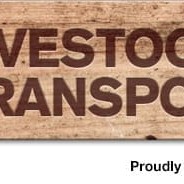A study has used National Livestock Identification System (NLIS) records to identify the transport routes of most importance to the northern cattle industry, and to assess the costs incurred to industry when shocks such as flood events block access to one or more of those key roads.
The CSIRO study notes that beef industry supply chains in northern Australia are characterised by long transport distances, with nearly 50 percent of cattle in the Northern Territory travelling upwards of 1000km between breeding properties and abattoirs (or port), with the transport costs exceeding $150/head.
The industry is therefore highly vulnerable to supply shocks from market and climate, with many properties having no viable alternative markets.
The authors of the study developed three models to assess the costs to industry of northern chokepoints and to identify where upgrades to beef routes and industry infrastructure could serve the greatest benefit.
The study identified that the largest volumes of cattle movements in Northern Australia were from property to property (which included property to feedlots and finishing properties) with 18,434,783 cattle movements identified from NLIS records between 2007-2011.
That was followed by movements from property to abattoir (9,650,681); property to saleyards (8,776,000); saleyards to property (6,404,476); saleyard to abattoir (2,360,252) and property to export depot (2,049,392).
The study considered the impact on two hypothetical supply chains – one involving 25 different locations supplying an export yard in Katherine, the other involving 25 locations supplying an abattoir near Brisbane – in the event of blockages caused by flooding to the most commonly used transport routes.
The modeling predicted that the average increase in transport costs would total 21 percent for cattle supplied to Katherine, and 11pc for cattle supplied to the Brisbane abattoir.
The Cattle Council of Australia said the information contained in the study will play a useful role in helping the industry to lobby for much-needed improvements to transport infrastructure, particularly with two white papers being developed Agriculture and Northern Australia.
CCA chief executive officer Jed Matz told an AgForce cattle industry forum at Gladstone last November that the council now plans to take the information a step further by assessing what other costs in addition to freight that supply chain shocks cause for the industry.
“With Meat & Livestock Australia we’re going to take that data and modeling and overlay the information we can get as an industry through Meat Standards Australia (MSA) and look at what the extra distance in transport means in terms of how many extra dark cutters we get because of that,” he said.
“Or what effect did it have when cattle were going to different abattoirs and creating a backlog and therefore a reduction in price because there were too many cattle backed up.
“With all of these things we can try to estimate a cost, and then use that information to inform some of the papers that are being developed by the Government.”
Mr Matz told the AgForce forum that the study demonstrated what could be done when an industry had good systems in place.
“If we didn’t have NLIS we couldn’t do this work,” he said. “It is another good example of why we should have good systems.”
Click here to access Beef Central's recent "Top 25 Livestock Transporters" feature

